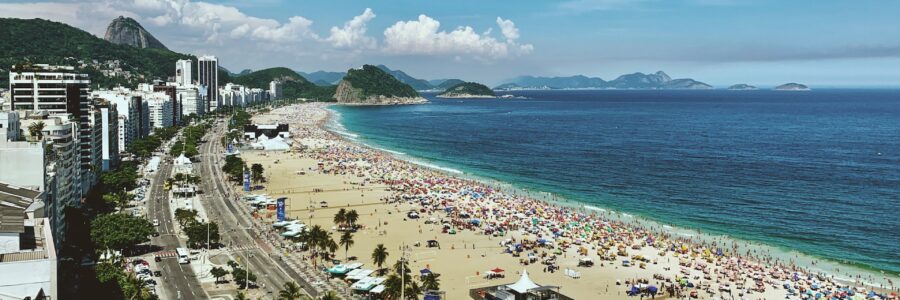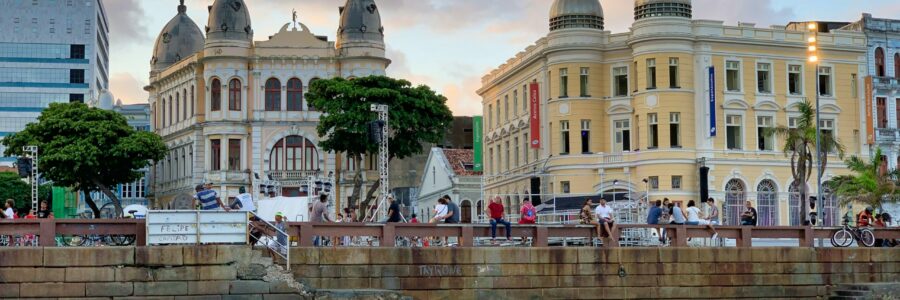Get Ready for Your Brazil Travel Checklist! What to Prepare Before Going to Brazil
Brazil is a vibrant country with plenty of attractions and activities to explore. Whether you’re planning a trip to the Amazon rain-forest, the bustling cities of Rio de Janeiro or São Paulo, or the sunny beaches of the northeast, it’s important to be prepared. Here’s a checklist of essential items to be aware of before traveling to Brazil, along with some frequently asked questions, a list of major tourist attractions, and a suggested packing list.
Everything You Need to Know
- Visa Requirements – If you’re a US passport holder planning to travel to Brazil, you can enter the country for a stay of up to 90 days without a visa. However, starting from October 1, 2023, Brazil will require a visa for American travelers. It’s essential to check the most up-to-date visa requirements before your trip to ensure that you have the necessary documents. You can apply for a Brazilian visa at a Brazilian embassy or consulate in the United States.
- Currency Restrictions for Entry and Exit: Any traveler entering or leaving Brazil with an amount equal to or exceeding 10,000 Brazilian Reais (BRL) or its equivalent in another currency must declare it to the Brazilian Customs Authority (Receita Federal).
- Vaccinations – Some vaccinations are recommended before traveling to Brazil, such as COVID-19, yellow fever and hepatitis A and B. Consult your doctor or travel clinic at least a month before your trip to ensure you’re up to date with any necessary vaccinations.
- Language – Portuguese is the official language of Brazil. While English is spoken in tourist areas, it’s helpful to learn some basic Portuguese phrases to communicate with locals.
- Safety – Brazil has a reputation for high crime rates, particularly in urban areas. Be aware of your surroundings and take precautions, such as avoiding certain neighborhoods and not carrying large amounts of cash.
How to Make the Most of Your Trip
- Amazon rain-forest – A must-see for nature enthusiasts, the Amazon rain-forest is home to a vast array of plant and animal species.
- Christ the Redeemer Statue – Located in Rio de Janeiro, this iconic statue is one of the most recognizable landmarks in Brazil.
- Copacabana Beach – Another Rio de Janeiro favorite, Copacabana Beach is a popular spot for sunbathing, swimming, and people-watching.
- Iguaçu Falls – This impressive waterfall system is located on the border of Brazil and Argentina and is a UNESCO World Heritage Site.
- Salvador da Bahia – Known for its colorful colonial architecture and rich Afro-Brazilian culture, Salvador is a must-visit destination for history and culture buffs.
- Rio Carnival – If you’re visiting Brazil in February or March, don’t miss the world-famous Rio Carnival, a massive celebration of music, dance, and culture.
- Sugarloaf Mountain – Is a granite monolith in Rio de Janeiro, Brazil, that is 396 meters (1,296 ft) high. It is one of the most famous landmarks in Brazil and a popular tourist destination. The mountain is located in the Tijuca Forest National Park and can be reached by cable car. From the top of the mountain, there are stunning views of Rio de Janeiro, including the beaches of Copacabana and Ipanema, the Christ the Redeemer statue, and the Guanabara Bay.
- Ipanema Beach – is one of the most famous beaches in the world, and it’s easy to see why. It’s a beautiful stretch of sand with clear blue water, and it’s always bustling with activity. There are people swimming, sunbathing, playing volleyball, and just relaxing in the sun.
- Recife – is a major economic and cultural center in Brazil. The city is home to a number of universities, museums, and theaters. Recife is also a major port city, and is an important center for trade and commerce.
- Brasília – is a modern and cosmopolitan city, and it is a major center for business, government, and culture. The city is home to a number of universities, museums, and theaters. Brasília is also a major tourist destination, and it is known for its beautiful architecture, its vibrant nightlife, and its delicious food.
- The Pantanal wetlands – is home to a wide variety of animals, including jaguars, caimans, capybaras, giant anteaters, and anacondas. It is also home to a variety of birds, including macaws, toucans, and herons. It is a popular tourist destination, and there are a number of ways to experience the wetland. You can go on boat trips, go hiking, or go camping. You can also visit one of the many wildlife refuges in the Pantanal.
- The Colonial city of Ouro Preto – is a UNESCO World Heritage Site and one of the most popular tourist destinations in Brazil. The city’s historic center is a maze of narrow streets and cobblestone alleyways, lined with colonial buildings. There are also a number of museums, art galleries, and theaters in Ouro Preto. The city is home to a number of festivals and events throughout the year, including the Festival de Inverno (Winter Festival), the Carnaval (Carnival), and the Festa do Divino Espírito Santo (Feast of the Holy Spirit).
- The Pantanal city of Cuiabá – is a modern city with a variety of attractions. The city is home to a number of museums, including the Museu do Pantanal, which is dedicated to the natural history of the region. There are also a number of parks and gardens in the city, including the Parque das Nações Indígenas, which is home to a variety of native plants and animals. It is also a popular destination for outdoor activities. The city is surrounded by the Pantanal, which is a great place to go birdwatching, fishing, and boating. There are also a number of hiking trails in the area.
Frequently Asked Questions
What is the best time to visit Brazil?
The best time to visit Brazil depends on what you want to do. The dry season runs from April to October, which is the best time for hiking and camping in the Amazon rainforest. The wet season runs from November to March, which is the best time for swimming and surfing in the northeast.
What is the currency of Brazil?
The currency in Brazil is the Brazilian real (BRL).
What is the climate like in Brazil?
Brazil has a tropical climate, with warm temperatures and high humidity. The average temperature in the south is 22 degrees Celsius (72 degrees Fahrenheit), while the average temperature in the north is 27 degrees Celsius (81 degrees Fahrenheit). The wet season runs from December to March, and the dry season runs from April to September.
The Amazon rainforest has a humid equatorial climate, with average temperatures of 26 degrees Celsius (79 degrees Fahrenheit) and high humidity. The rainforest receives an average of 2,000 mm (79 inches) of rain per year.
The semi-arid northeast region of Brazil has a hot, dry climate. The average temperature in this region is 27 degrees Celsius (81 degrees Fahrenheit), and the average annual rainfall is less than 800 mm (31 inches).
The south of Brazil has a subtropical climate, with warm summers and cool winters. The average temperature in the south is 18 degrees Celsius (64 degrees Fahrenheit) in the summer and 10 degrees Celsius (50 degrees Fahrenheit) in the winter. The south receives an average of 1,500 mm (59 inches) of rain per year.
The climate of Brazil is diverse, and it varies depending on the region. The Amazon rainforest has a humid equatorial climate, the semi-arid northeast region has a hot, dry climate, and the south has a subtropical climate.
What are the customs and etiquette in Brazil?
Brazil is a diverse country with a rich culture, and its customs and etiquette vary depending on the region. However, there are some general rules of thumb that you should follow when visiting Brazil.
- Politeness is important in Brazil. Always greet people with a smile and a handshake, and be sure to say “please” and “thank you.”
- Dress appropriately. Brazil is a casual country, but it’s important to dress appropriately for the occasion. For example, you wouldn’t want to wear shorts and a t-shirt to a formal event.
- Be aware of your surroundings. Brazil is a safe country, but it’s always a good idea to be aware of your surroundings, especially in large cities.
- Don’t be afraid to ask for help. If you’re lost or need help, don’t be afraid to ask for help from a local. Brazilians are generally very friendly and helpful.
- Be respectful of Brazilian culture. Brazil is a diverse country with a rich culture, and it’s important to be respectful of the local customs and traditions.
Here are some additional customs and etiquette tips for Brazil:
- When greeting someone, it is common to kiss each other on the cheek. The number of kisses varies depending on the region, but it is usually two kisses for women and one kiss for men.
- It is considered rude to point at someone with your finger. Instead, use your entire hand to point.
- It is considered rude to talk on the phone with your hands in your pockets.
- It is considered rude to eat or drink while walking down the street.
- It is considered rude to belch or burp in public.
By following these customs and etiquette tips, you can ensure that you have a positive and enjoyable experience in Brazil.
What is a good time to arrive at the airport for my flight to Brazil?
It’s recommended to arrive at the airport at least two hours before your domestic flight and three hours before your international flight to allow time for check-in, security, and potential delays.
How do I know if my layover in Brazil is long enough?
The length of your layover depends on your travel itinerary and preferences. Generally, a layover of at least two hours is recommended to allow time for potential flight delays and to navigate through the airport.
What options are available for cell phone service in Brazil?
If your phone is unlocked, you can purchase a local SIM card in Brazil to access cell service. Alternatively, you can consider purchasing an international data plan through your phone provider before your trip.
How can I get from the airport to my final destination in Brazil?
Transportation options vary depending on the airport and destination. In major cities, taxis, ride-sharing services, and public transportation may be available. Research your transportation options ahead of time and consider pre-booking transportation if possible.
Brazil Travel Packing List: What to Pack for Your Trip
- Clothes: Pack light, comfortable clothing appropriate for the climate, including a light rain jacket or umbrella, a neck pillow, a travel blanket, swimsuit, beach towel, hat, sunglasses, and sunscreen. If you plan to visit the Amazon, be sure to bring long-sleeved shirts and pants to protect against mosquitoes and other insects. Don’t forget to pack a day-pack or small backpack for daily excursions.
- Shoes: Bring comfortable shoes suitable for walking and exploring. You may also want to pack a pair of sandals or flip-flops for the beach.
- Toiletries: Pack your usual toiletries, such as shampoo, conditioner, soap, toothpaste, and toothbrush, as well as sunscreen, insect repellent, hand sanitizer, any necessary medication, and a first-aid kit.
- Electronics: Remember to pack your camera, phone, laptop, and any other electronics you plan to use. Don’t forget to bring chargers, a power bank, and adapters for all of your devices.
- Documents: Don’t forget to bring your passport, visa (if required), and any other important documents. Make copies of your documents and keep them in a safe place. A travel guide or maps can also be helpful.
- Money: When traveling to Brazil, it’s important to have sufficient cash on hand, as many businesses in smaller towns may not accept credit cards. The local currency in Brazil is the Brazilian Real, which can be exchanged for your currency at a bank or currency exchange bureau. Hotels and travel agencies may also be able to exchange money for you. Additionally, it’s recommended to bring a debit or credit card, as they are widely accepted in larger cities and tourist areas.
To ensure a smooth and enjoyable trip to Brazil, be sure to research your destination, take safety precautions, and pack appropriately. With these tips in mind, you’ll be ready to make the most of your time in this beautiful country.


















